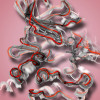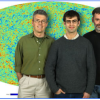Science News
NERSC Develops Archiving Strategies for Genome Researchers
When researchers at the Production Genome Facility at DOE’s Joint Genome Institute found they were generating data faster than they could find somewhere to store the files, let alone make them easily accessible for analysis, a collaboration with NERSC’s Mass Storage Group developed strategies for improving the reliability of storing the data while also making retrieval easier. DOE’s Joint Genome Institute (JGI) is one of the world’s leading facilities in the scientific quest to… Read More »
KamLAND Uses PDSF, HPSS to Find First Geo-Neutrinos
In a paper which was featured on the cover of the July 28, 2005 issue of Nature, an international group of researchers reported the first observation of geologically produced anti-neutrinos. The observation is giving scientists new insight into the interior of our planet. While the “geo-neutrinos” were detected at the KamLAND facility in Japan, most of the data was stored on NERSC’s High Performance Storage System (HPSS) and analyzed using the PDSF cluster at NERSC. Together, these… Read More »
Groundbreaking Combustion Research by LBNL Featured on Cover of Proceedings of National Academy of Sciences
Computational and combustion scientists at the U.S. Department of Energy's Lawrence Berkeley National Laboratory have earned national recognition in the July 19, 2005 Proceedings of the National Academy of Sciences with their cover article about unparalleled computer simulations of turbulent flames. Read More »
Protein Dynamics Hit the Big Screen
Scientists from Berkeley Lab and UC Berkeley are using one the world's most powerful computers to simulate how protein molecules move, rotate, and fold as they carry out life's most fundamental tasks. Although they only approximate real-life phenomena, the increasingly realistic movies are becoming useful complements to real-world experiments in helping scientists determine how proteins function. Using them, biologists can gain a better understanding of how incorrectly folded proteins lead to a… Read More »
Climate Models Show That Sea Level Rise from Thermal Expansion Is Inevitable
Even if all greenhouse gases had been stabilized in the year 2000, we would still be committed to a warmer Earth and greater sea level rise in the present century according to a new study by a team of climate modelers at the National Center for Atmospheric Research (NCAR). The models were run on supercomputers at NCAR and several DOE labs, including NERSC, and on the Earth Simulator in Japan. The findings were published in the March 18, 2005 issue of the journal Science. The modeling… Read More »
Fusion Researchers Use 4,096 Processors to Study Electron Collisions
As NERSC moves to allocate more resources to larger jobs, researchers are making greater use of the opportunity to run on more processors and combine this with NERSC's well-established reliability. In March, Connor Ballance, of Rollins College, a research scientist within a collaborative research effort between Rollins College, Auburn University, and Oak Ridge National Laboratory, undertook a large R-matrix scattering calculation on this iron ion. He used 4,096 processors for a twelve-hour… Read More »
Simulating a Map of the Cosmic Microwave Background: What the Planck Satellite Will See
In the year 2007 the European Space Agency, with substantial NASA participation, will launch the Planck satellite on a mission to map the cosmic microwave background (CMB), the remnant radiation believed to be an echo of the Big Bang that started the universe.Planck is designed to map CMB temperature and polarization fluctuations with unprecedented resolution and sensitivity, but the enormous volume of data this will generate poses a major computational challenge. Can such a mountain of data be… Read More »









